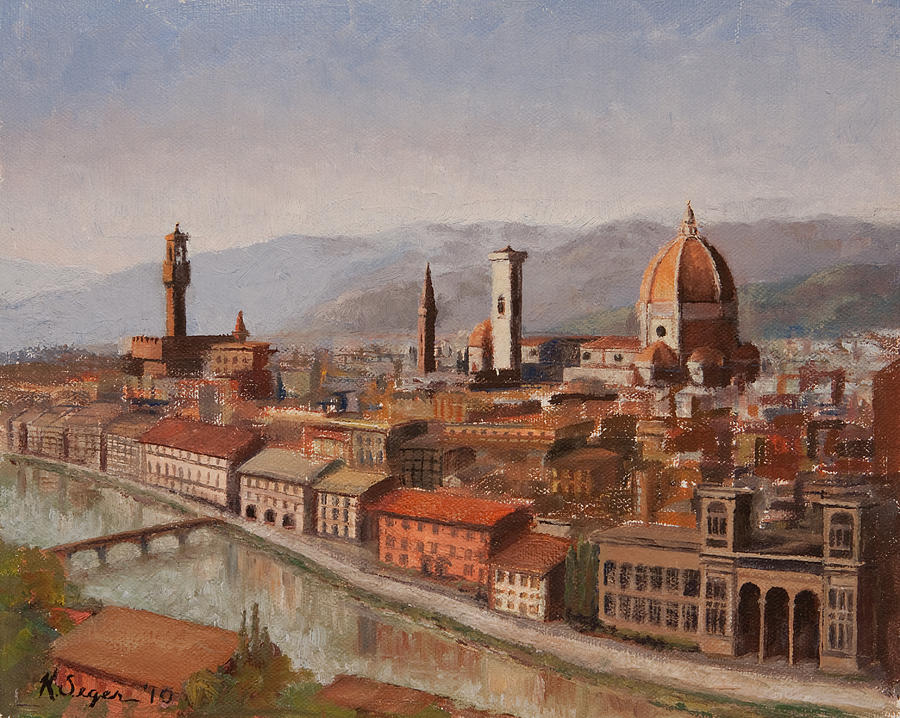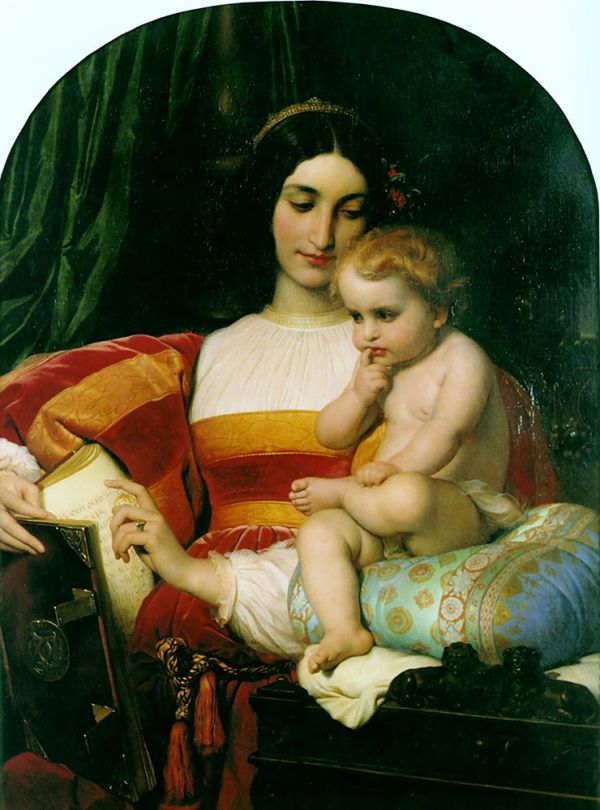Early Renaissance
 |
| Katherine Seger Florence from Piazza Michelangelo c. 2010 Painting, oil on linen panel, approx 10" x 8" |
Florence, Italy, often considered to be the birthplace and driving force behind the Renaissance. And when one considers the amount of prominent figures from Florence that stoked the fires of the Renaissance, it makes sense to attribute it as the proverbial capital, particular in the early stages.
 |
| The Arnolfini Marriage Jan van Eyck, 1434. National Gallery, London Tempera and oil on wood, approx, 32"x23". |
Some of the major forces behind Florence's fame during the early Renaissance was due the assortment of merchants and bankers. It was Florentines who devised a system of banking that which we use to this day. A great many families created their fortunes through banking. Florence's system of bankers helped it thrive economically. As Michael Wood, in his video Art of the Western World; The Early Renaissance, states, "Bankers and textile merchants were expanding their trading empires all over Europe... the patronage of a wealthy commercial class... brought about a series of artistic and intellectual breakthroughs that came to be known as the Renaissance" (Art of the... 3:11). Merchants varied from skill to skill, there were craftsmen, sculptors, stoneworkers, builders, lawyers, and so on.
Select members were part of guilds that in essence ruled and helped the flow of trade in Florence, "This 'representative' government… preserved Florence from the rise of the terrible city tyrants that plagued so many other Italian cities" (Cunningham 268). It was a change from the medieval social hierarchy that had the wealthy at the top and everyone else at the bottom. The additions of merchant and bankers created a middle class and the divide between the wealthiest and poorest was somewhat abridged.
.jpg) |
| Narcissus Caravaggio, 1599. Galleria Nazionale d'Arte Antica, Rome Oil on canvas, approx, 43" x 36" |
Cunningham on the other hand goes into depth about some of the most prominent and influential humanists and how they influenced the Renaissance. Cunningham writes, "a strong conviction that humanist learning would not only ennoble and perfect the individual but could also serve as a powerful instrument for social and religious reform" (287). The Renaissance is often called one of the greatest art periods, however, the breathtaking art that was made during the Renaissance did not spring overnight.
Why was it that such art, innovation, and awakening was spreading? Because people were leaving the Medieval sense of despair behind them. It was appreciation and love for the human nature and all it was capable of achieving. It was spread of humanism that awakened the genius we see today in the art, architecture, music, literature, that was created during the Renaissance.
 |
| L'enfance de Pic de la Mirandole Paul Delaroche 1842 Nantes Museum of Arts, France Oil on canvas, approx, 45.6" x 29.9" |
One of the many influential figures of the times was Giovanni Pico della Mirandola, a humanist, whom some declare to be of the greatest and most brilliant. Pico believed human intellect was crucial to bettering ones self and that which they were surrounded by. And so he made sure to study every fundamental principle that crossed his path, he was well-read and took it upon himself to study teachings and values from different institutions, such as Islam, Judaism, and Neo-Platonism.
Cunningham mentions Pico and how his humanistic nature attracted many eager students to his side, whom would go on and spread what they learned and defend their stance when questioned (288). The influence of humanism during the Renaissance is widely and thoroughly mentioned in Cunningham's Culture and Values, whereas, Wood focuses more on the artistic and economical aspects of the early Renaissance in Florence, Italy. However, Wood does mention, "Scholars... and the artists of Renaissance, Florence had a passionate love affair with the antiquity the humanists recovered... " (8:16-8:20). Reading through the text one gets the importance humanism played in the early Renaissance, an explanation as in to why there was as sudden boom of genius across Florence.
The Renaissance was not just a time for the "rebirth" of art and religion, it was a "rebirth" of the way humanity viewed itself. No longer were we one dimensional beings who just existed, no, we were complex beings who wondered about the human nature, who marveled and appreciated the intellectual abilities of mankind, who called for tolerance in a time where it did not exist. The uniqueness of an individual was celebrated and the early Renaissance truly had some of the most unique individuals.
Work Cited
